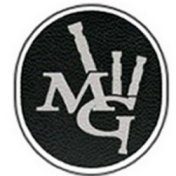Setting Up And Optimising Your Drone Reeds
You should maintain your drones/bagpipe in good condition. They must be correctly hemped, with no loose or wobbling joints, and no joints that are excessively tight. Any efforts to produce a steady bagpipe will be ineffective if your instrument is not properly maintained.
Fitting your reeds
Insert your drone reed into the reed seat of the drone. Seat the drone reed about half way into the reed seat. Set the pitch adjuster about mid way. This will leave room for additional pitch adjustment should it be required. IMPORTANT; Adjust the hemp area of the drone reed to ensure a snug fit in the reed seat..
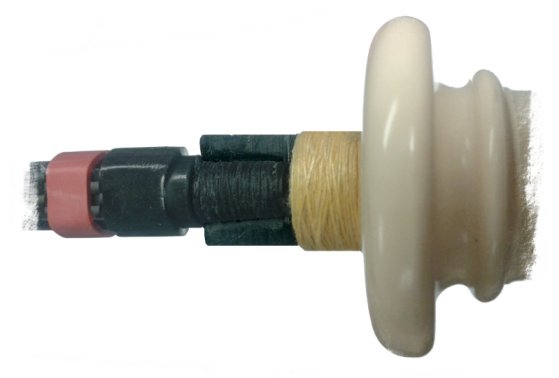
To prevent a drone reed from getting lost inside a bag, fold back the last turn of the hemp and place it between the drone's stock and joint.
When setting up cane drone reeds, make sure you seat them firmly, but not so much that the tapered reed seat of the drone puts excessive pressure on the cane walls. This pressure will cause the tongue to rise during play as the reed takes on moisture and so cause unsteadiness, a very common mistake made.
Setting the strength
Starting with the tenors, mouth blow these while seated in the drone. Set the strength of the reed to suit your own strength of blowing. You should be setting the drone reed so that an increase in pressure from your normal strength will stop the drone. Be careful here, if you set a drone reed to close to this stopping point it can cause unsteadiness. This is particularly so for cane drone reeds.
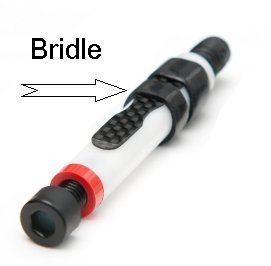
You are looking to obtain a strength where the double tone of the drone reed just kicks out as / before you bring the chanter in.
Finessing the strength
Now that you have the desired strength of the drone reeds approximately set it is time to finesse them.
With the drones now inserted in the bagpipe, cork the chanter stock, blow up and tune the drones. Do not worry at this stage about where on the slides they are tuning.
Gradually increase the pressure of your blowing until the drones start to stop. As you increase the pressure, your drones will start to drift out of tune. This is because pitch is partially pressure dependent however we are not concerned with this at moment.
Should all your drones stop at once, this is what we're looking for. If not, blow your chanter at normal pressure to see which drone stops.
Should they all stop then you will have to open up the bridles a fraction, to make the reeds slightly stronger. If one or more drone keeps going then take note which one (s) and remove the chanter.
Re-cork the chanter stock and strike up again. Having noted which drone (s) kept sounding gradually increase your blowing pressure until this drone (s) stops. You now want to adjust the bridles on the remaining drones so that they too cut off at the same pressure. This may take a few attempts to get right but a little patience shown here will pay its rewards later.
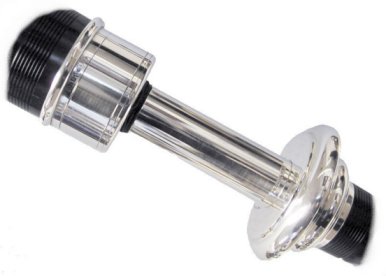
Drone Height
Now that we have the drones operating at the desired pressure, we want to have them tuning in the sweet spot. Pipes vary from make to make however it is usual that this spot will be found on or just above the hemp line with the tenors and bass top joint, as shown. The bass bottom joint will normally be a little lower. On older pipes it can be very close to the bottom mount.
Pitch
Bear in mind that when setting the drones to tune in these spots, the pitch of the chanter will increase as you play it until you reach the steady window. It is necessary therefore, if you are setting up from a cold blown reed, to set the drones tuning a little higher on the pin than desired.
Although this is normally where you will find the sweet spot, it will vary from pipe to pipe. The important point to bear in mind, especially with tenor drones, is that the lower down the tuning pin the drone tunes the harder, and to some extent louder, the sound will be. This may well be a desirable characteristic of the pipe being set up, if they are an inherently quite set of drones compared to the volume produced by the chanter.
To achieve the desired tuning position of the drones it will now be necessary to raise or lower the pitch of the drone reeds. You can achieve this by the following methods.
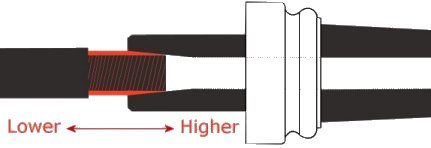
When we first introduced the reeds to the drones, we set them so that they were approximately half way into the reed seat. If we wish to lengthen the tuning pin of the drone to make the top sit up a little higher, we can seat the reed further into the Drone, so sharpening the pitch. Conversely, if we wish to lower the pitch slightly we can add a little hemp and seat the reeds a little further out.
Further pitch adjustment
Further pitch alterations, if desired, are achievable by changing the nose cones. Hollow nose cones will lower the pitch and solid nose cones will increase the pitch.
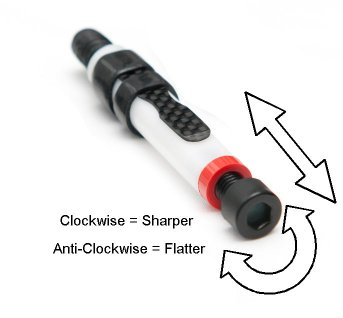
Now that we have the drone reed seated where we want we can now make further pitch adjustments by turning the nose cone of the reed. The same rules apply. Turn the nose cone inwards (clockwise), so shortening the reed length, raising the pitch. This will make the drone top tune a little higher on the pin. Conversely, turn the nose cone outwards (anti-clockwise) to lengthen the reed, lower the pitch, making the drone top tune a little lower on the pin.
